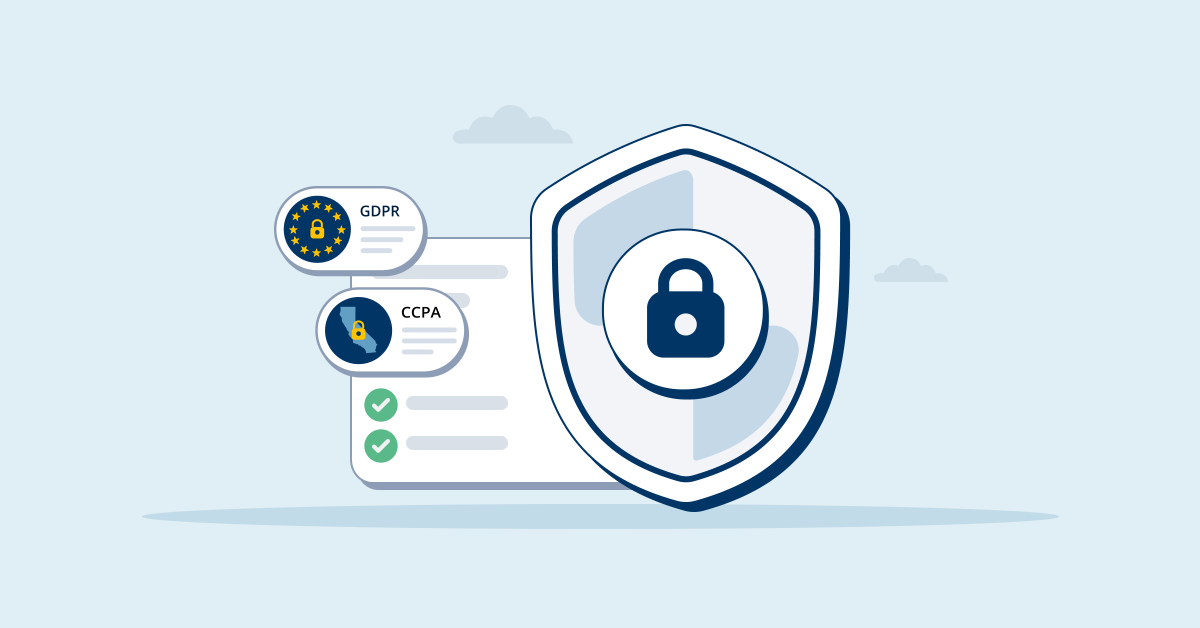Cookies - 25 May 2021 | By TermsHub
Updated at: 09 December 2021
What are Third-party Cookies and What Can You Do About Them?

Obtaining information from a consumer’s web experience is a convenient move made by companies. For a business, this data is an asset that can be useful to know how their users move. It may sound challenging for them to find someone willing to give them their web activities, but a lot of people have already been participating, and you might be included in it.
The simple move companies do ask if you want to accept your cookies. You want to access a website, and this question is in the way, so you just hit accept. Without your full knowledge, you allow them to track your activity on the page, and that’s how they acquire data from you. Although it may seem suspicious and unsafe to share your information with companies, even if it’s just your movement across a specific webpage, it helps both you and those running the cookies.
Third-party cookies, also known as trackers, are cookies placed on a website by another domain. You can be visiting a site in simpler terms, but a different owner owns the cookies. Usually, advertising companies or social media sites that the website is subscribed to or partnered with are the ones who own the third-party cookies.
How do third-party cookies work?
These trackers are made to work by advertisers and social networkers. It is a tool they use for behavioral targeting, allowing the marketing of products to be an easier job. By knowing how a specific person interacts with a site, the advertisers can show the products they can buy. Without the help of third-party cookies to the advertising companies, ads will not be refined, and you can be suggested products that you don’t have an interest in.
Creating a cookie is done by embedding JavaScript given by a third-party site. To provide you with the main points of the process, the website you are currently visiting requests a script from a service provider through live chat, and your browser will receive the JavaScript file that will be stored in your browser. Thus, without even visiting the third-party website, they can already gain access to your site movement and collect your data.
There are a variety of ways how the third-party provider collects your data from the site you originally visited. For example, as your browser send a request, it will tell what website you’re coming from. Meanwhile, if the website and the third party work together as partners, this site can directly tell where you came from.
Even simply clicking an image on a site, the cookie can record the user’s information, of course still with limitations. Sites set to “Strict” by cookie creator mean that cookies are only available for the first party provider, best to use when the cookie is used to remember the user preference for the site. “Lax” is a cookie sent securely and must cause top-level navigation. If none of these are entered, then all requests from the site can be accessed by the cookie, specifically a third-party cookie.
Are third-party cookies safe?
As good as third-party cookies sound to help personalize what you see in a webpage and the ads suggested to you, it can also create risk for those who have it enabled.
It is convenient to allow third-party cookies in your browsers, as it follows you around the web pages you visit and create suggestions that are most relevant to your web pattern and movement. For example, if you like watching on cooking channels, then you will get more video suggestions about a few more with the same topic. You can also get advertisements on cooking-related products which you might be interested in, and they know this through the cookies in your browser. Getting webpages to be personalized for you makes things more convenient, as you don’t have to view other content that is irrelevant for you.
The biggest drawback of third-party cookies is privacy issues. It is hard to trust software and companies to access your name, address, or even credit card information that’s stored in your browser. This personal information, if shared, can be dangerous in real life. Although not highly likely, there are still possibilities for hackers to hijack not only third-party cookies but cookies in general and gain your information without your permission. They can sell this or do any other illegal and unauthorized activity using your data.
Looking at this information, although there are advantages and disadvantages, the privacy issues outweigh its possible benefits for users, which is why we can see cookies more on the unsafe side. It deeply concerns the users, but browsers, marketers, and software companies allow users to limit the third-party cookies in browsers based on personal preference. In a sense, it is unsafe because of the risks, but you can lower down potential threats while maximizing your user experience through customizing the cookies in your browser.
How can you enable or block third-party cookies in different browsers?
Even if you can enable or disable cookies, it is usually hard to find the settings in your browsers. If turning it on or off is a big hurdle, users, whether alright or afraid with cookies, might overlook it and forget about it. So here’s a little guide on how you can toggle with cookie settings in your browsers:
Google Chrome
– Open the Google Chrome browser.
– On the upper right-hand corner of the screen, click the three vertical dots.
– Click Settings and choose the Privacy and security section that can be found on the left side.
– Open the “Cookies and other site data.” From here, you will see all the cookie settings.
– Tick the box on which settings you want to apply in your browser from the four options: Allow all cookies, Block third-party cookies in Incognito, Block third-party cookies, Block all cookies.
Mozilla Firefox
– Open the Mozilla Firefox browser.
– On the upper right-hand corner of the screen, click the three horizontal lines.
– Click Options and choose the Privacy and security section that can be found on the left side.
– You will find three options: standard, strict, and custom. Tick the circle on which option you wish to apply on your browser.
- Standard option will allow for balanced protection and performance. This will block most of the trackers and third-party cookies. This is the default Firefox settings.
- Strict option block almost all cookies, but it can make site navigation less smooth.
- The custom option allows you to customize which specific trackers and scripts to block.
Internet Explorer
– Open the Internet Explorer browser.
– On the upper right-hand corner of the screen, choose the Settings button.
– Choose Internet options, and a menu shall appear.
– Under the Privacy tab, go to the Settings section and click on the Advanced button.
– Another menu will appear on how you want your cookies to be handled. For example, you can accept, block, or prompt first-party cookies and third-party cookies separately.
Microsoft Edge
– Open the Microsoft Edge browser.
– On the upper right-hand corner of the screen, click the three horizontal dots.
– Click Settings, and from the left side of the page, choose the “Privacy, search, and services” tab.
– Tracking prevention is turned on by default, with three options: Basic, Balanced, and Strict.
- Basic option allows most of the trackers and sites will work smoothly. In addition, it will block known harmful trackers.
- Balanced option, the default and recommended, differs from basic by blocking trackers from sites you haven’t visited.
- Strict option will block almost all trackers from all sites, giving less personalization and may cause sites to malfunction.
Safari
– Open the Safari browser on your iOS device.
– In the upper left-hand corner of the screen, click Safari and choose Preferences.
– Click Privacy. Find the checkbox that says “Block all cookies.”
– If you want to disable, check the box “Block all cookies” and uncheck if you want to enable all cookies.
– To block only the third-party cookies, check the “Prevent cross-site tracking.”
The end of third-party cookies
Users’ privacy issues against third-party cookies start to grow bigger each day. These are not left unnoticed by browsers such as Firefox and Safari, which now block trackers in default. Although these cookies are beneficial to heighten a user experience across sites, third-party cookies specifically are not favored as they can be from domains that they haven’t even visited.
To make it worse for third-party cookies, Google will soon eliminate these out from their browser. Although delayed until 2023, the most-used desktop browser will phase out cookies over three months to protect millions of users’ privacy. Alternatives are also continuously worked on, including the Federated Learning of Cohorts or FLoC. It is a proposed shot on replacing third-party cookies. However, no browser vendor signaled it for use, and numerous users still are not in favor of this and would block FLoC.
Advertisers and the Internet are affected as the major browsers stopped their support of third-party cookies. Cross-site audience targetting wouldn’t happen anymore, and non-personalized ads will be a common occurrence now. To sum it all up, advertising campaigns’ effectiveness will not be as successful before. Brands that are not prepared for this unpleasant future of third-party’s only move right now are waiting for an alternative solution.
Third-party cookies won’t be prospering anytime soon, especially by the big move of Google to phase it out despite the significant harm it can put on advertising companies and their own ad space. For businesses, there’s no need to worry as adtech companies have already released several solutions. So let’s put in our hopes that marketing will thrive without third-party cookies.


